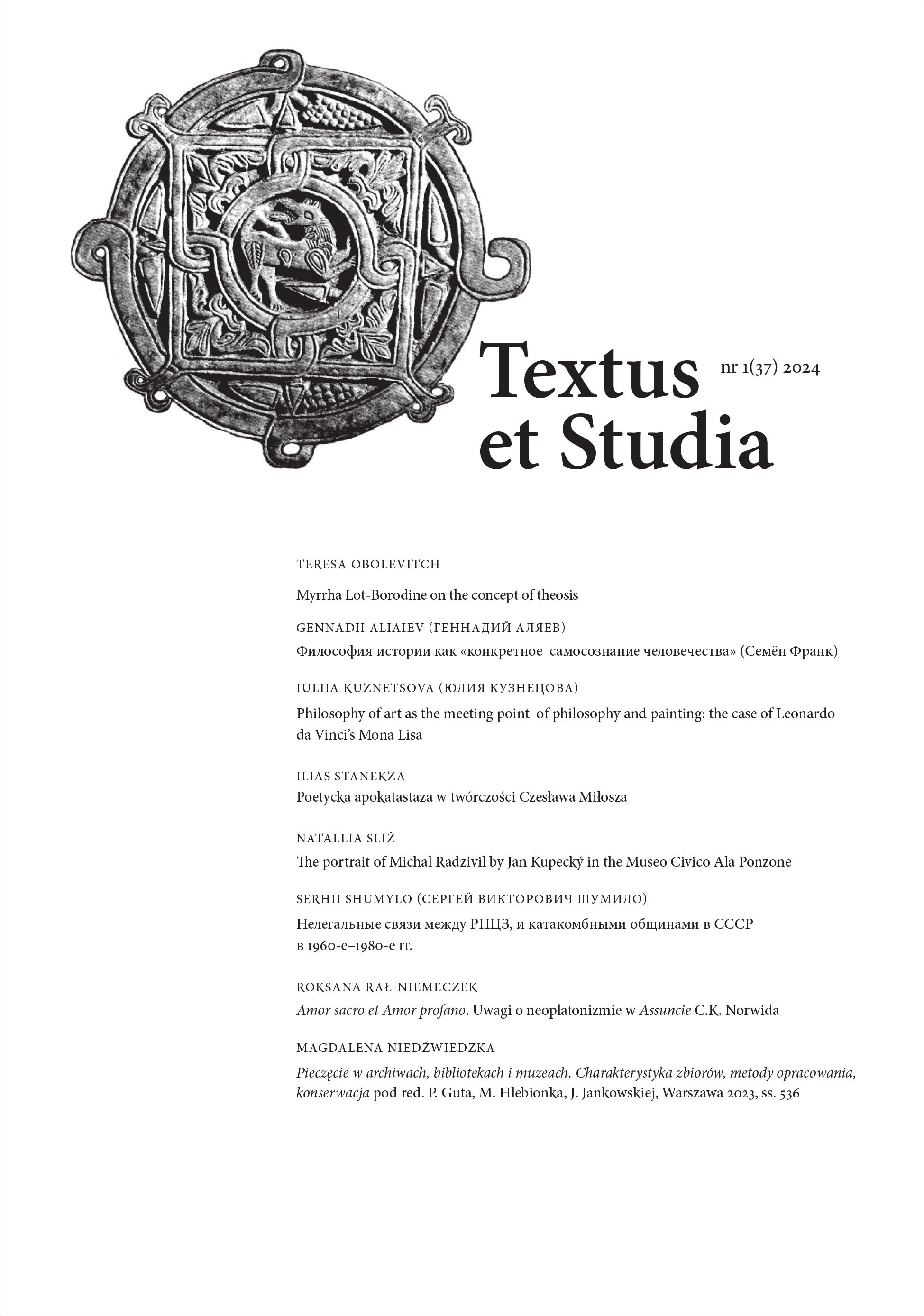Clandestine Connections between the ROCOR and Catacomb Communities in the USSR from the 1960s to the 1980s
DOI:
https://doi.org/10.15633/es.10106Keywords:
Catacomb Church, catacomb communities, ROC, ROCOR, TOC, Filaret Voznesensky, Anthony Bartoshevich, Grigory Grabbe, Lazar Zhurbenko, Anthony Golynsky-Mikhailovsky, Seraphim Pozdeev, Gennady SekachAbstract
The article analyses the situation of non-conformist Catacomb Orthodox communities in the USSR in the 1960s–1980s. It examines the problems of persecution by the Soviet regime against the church opposition, the loss of hierarchy with canonical apostolic succession in the catacomb communities, the emergence of various currents and groups, and the emergence of self-sanctification and sectarianism. In this context, special attention is paid to the establishment by the catacomb “True Orthodox Christians” (TOC) from the USSR of secret ties with the Russian Orthodox Church Outside of Russia (ROCOR), as well as to the attempts of the clergy of the Russian Church Abroad to regulate the canonical status of these catacomb communities and thereby prevent the spread of self-sanctification and degeneration into sectarianism in the catacomb environment by means of secret care (following the example of the “experience of the Edinoverie”). The situation of the Catacomb Church in the USSR and the restoration of its episcopate in the 1980s are examined in detail. The article is the first to introduce into scientific circulation previously unknown archival sources and eyewitness testimonies.
The author expresses his particular gratitude to Archpriest Serafim Gan, head of the Chancery of the Synod of Bishops and secretary to the First Hierarch of the ROCOR for the opportunity to work with documents from the Archive of the Synod of Bishops of the ROCOR in New York.
Downloads
Published
Issue
Section
License

This work is licensed under a Creative Commons Attribution 4.0 International License.
Authors who publish with this journal agree to the following terms:
- Authors retain the copyright and full publishing rights without restrictions, and grant the journal right of first publication with the work simultaneously licensed under a Creative Commons Attribution 4.0 International License that allows others to share the work with an acknowledgement of the work's authorship and initial publication in this journal.
- Authors are able to enter into separate, additional contractual arrangements for the non-exclusive distribution of the journal's published version of the work (e.g., post it to an institutional repository or publish it in a book), with an acknowledgement of its initial publication in this journal.
- Authors are permitted and encouraged to post their work online (e.g., in institutional repositories or on their website) prior to and during the submission process, as it can lead to productive exchanges, as well as earlier and greater citation of published work (See The Effect of Open Access).

